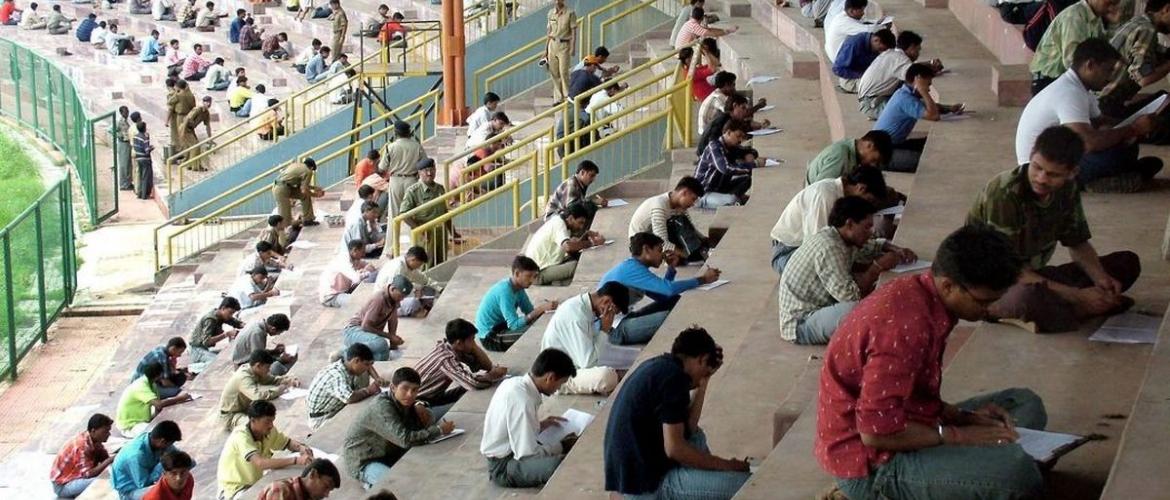Despite the extensive rhetoric of the BJP and INC, the annual employment statistics is telling a different story. The data suggest that, at least in 2016, unemployment hovered around 5%. More worryingly, the labour force participation rate stood at an unusually low 50%, meaning only half the working-age population was actively working or seeking employment. By comparison, China’s labour participation rate averaged 75% from 1990 to 2017. Rates in other emerging Asian economies such as Vietnam (77%), Indonesia (70%), Thailand (69%) and Bangladesh (57%) are typically much higher as well.
Background
Dynamic states which are actively improving their ease of doing business -- including Chhattisgarh (1.9%), Karnataka (1.5%) and Gujarat (0.9%) -- recorded the lowest unemployment rates. By contrast, progressive states that have scored well on human-development indicators such as literacy and maternal health don’t seem to be great job-creators: Unemployment in Kerala came in at 12.5%, while in Tripura and Himachal Pradesh it stood at 19.7% and 10.6% respectively. Not surprisingly, these states have lagged in improving their business environment.
The trend holds true when one drills down into specific categories of workers as well. It’s remarkable that states that have generally fared well on social indicators nevertheless register alarmingly high levels of female unemployment -- as high as 30 % in Kerala. By contrast, the states generating most jobs have spread the wealth to women as well as men: Karnataka, Chhattisgarh and Gujarat have female unemployment rates as low as 2 %, 1.8 %, and 1.1 % respectively. (Even there, however, the rates of female labour force participation remain disturbingly low, as they do across the country.)
Similarly, while unemployment is higher among youth in India (13.5%) than those over 30 years of age (1.5%), as it is in much of the world, economically dynamic states have also found jobs for younger workers. Gujarat (2.7%) and Karnataka (4.4%) have the least youth unemployment, while states which rank low on the ease of doing business, including Kerala (29.7%), Himachal Pradesh (32%) and Tripura (36.7%) report particularly high levels of youth unemployment.
The “Gap”
If all that should persuade politicians from all parties of the need to focus on eliminating red tape and promoting investment-friendly policies, the numbers also contain sobering lessons for new job-seekers. What stands out is how concentrated unemployment is among the most-educated young Indians. Unlike in developed economies, where jobs increasingly flow to the better-educated, in India the trend is the opposite. Nearly 35% of Indian youth who possess graduate degrees and above are unemployed, while relatively uneducated young workers (6.2% unemployment) are doing much better. A highly educated Indian youth is more than five times as likely to be unemployed as an uneducated one.
The gap probably says something about the quality of the jobs being created, with most involving mundane or repetitive tasks. A fine example of this is the Mahatma Gandhi National Rural Employment Guarantee scheme which many economists have said propagates the notion of ‘hidden unemployment’. It also says something about the quality of Indian education: Too many engineers and other professionals are waving around degrees that are relatively worthless.
The latter raise expectations without providing necessary skills, so graduates prefer to remain unemployed rather than accept work that seems beneath their station. Some believe their time is better spent preparing for further tests and qualifications so they can, for instance, win particularly prized positions such as those in the government.
Assessment
Our assessment is that both the government and private sector certainly have a responsibility to improve the quality of education and to generate more high-quality jobs. However, they should not deliberately misguide the people over the mishandling of the economy. Mature political actors step up and take responsibility for their actions and the current crop of our elected representatives are far from doing so. We believe that the annual employment statistics do not support BJP's claim of generating 5 crore jobs so far.

